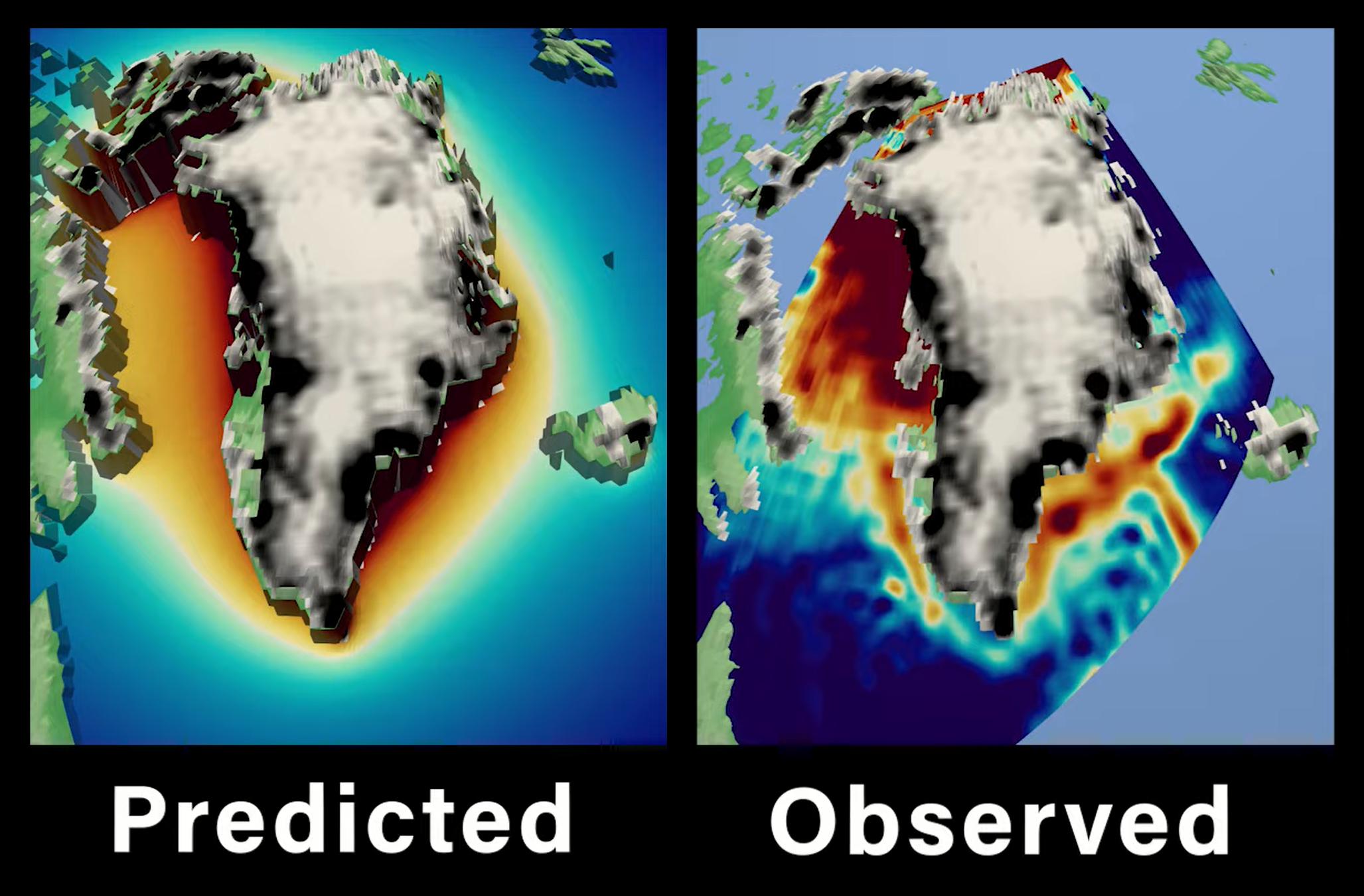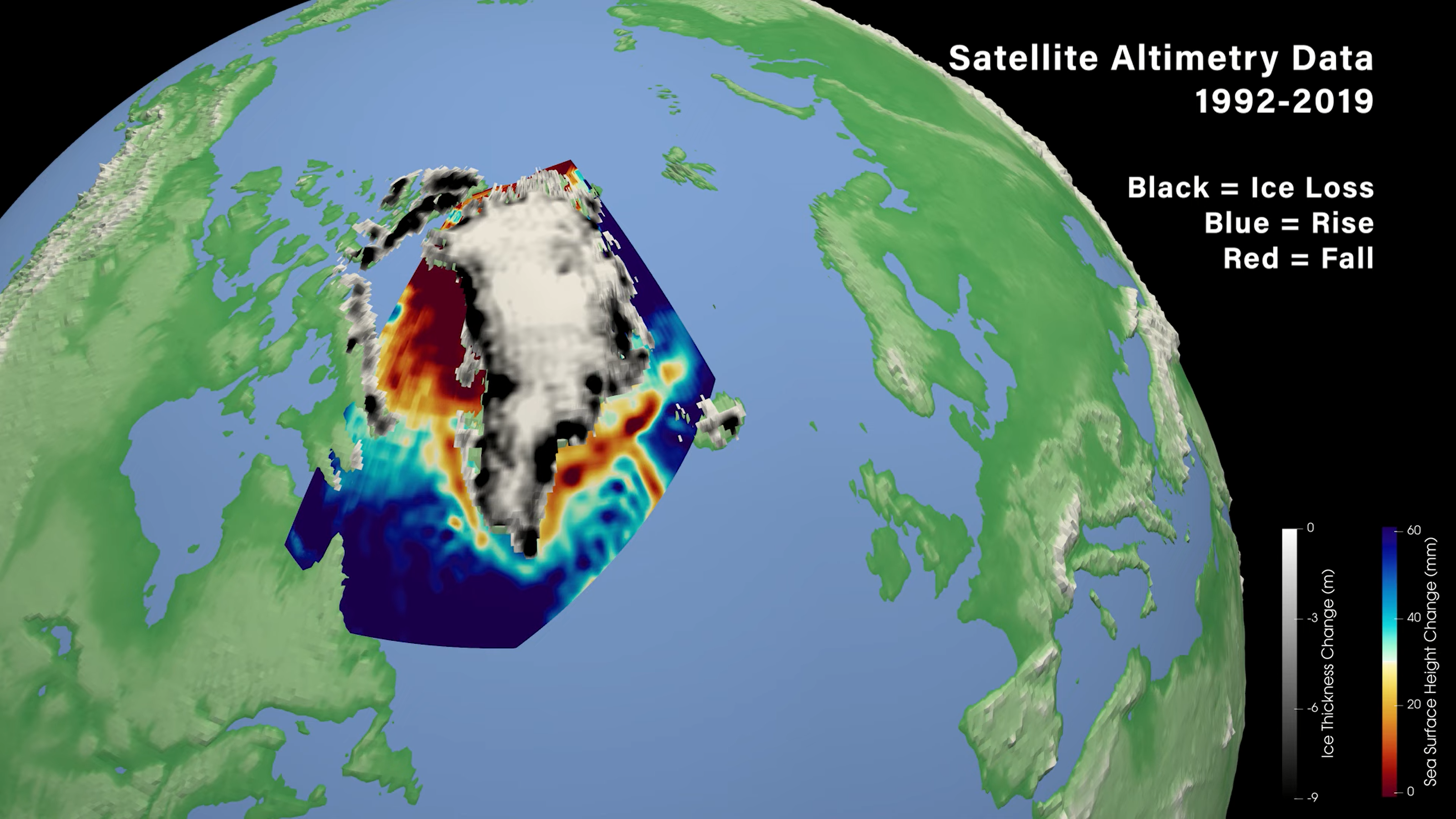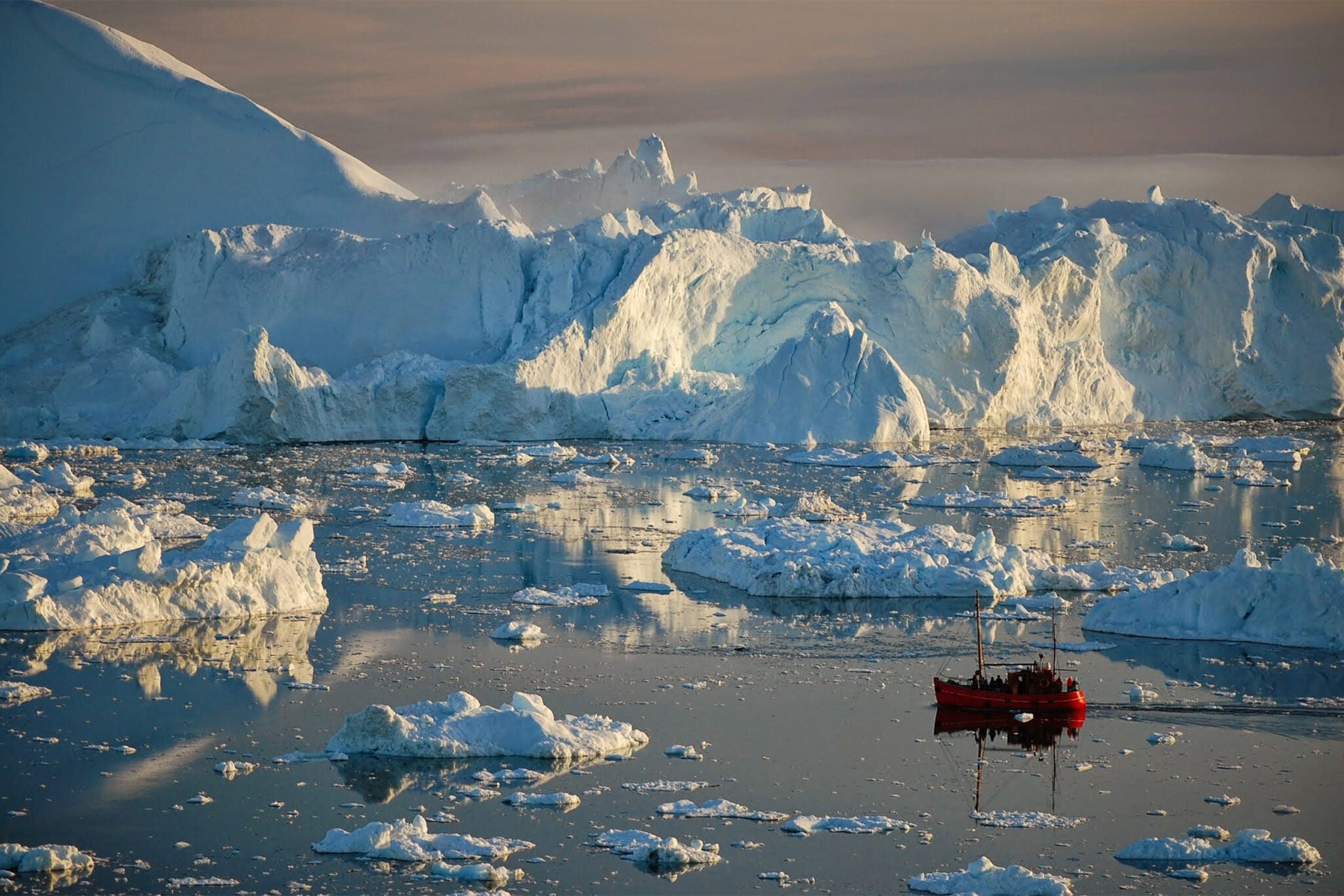Discovery of “fingerprint” confirms alarming predictions of Greenland ice sheet melt – “How fast the ice sheets in Greenland and Antarctica will respond to warming is a really big unknown, and frankly a very scary unknown”

By Sarah Sloat
29 September 2022
(NBC News) – Scientists now have unambiguous proof that a phenomenon critical to predicting the impact of climate change exists.
Researchers announced Thursday that they had detected the sea level “fingerprint” of the Greenland ice sheet melt, pinpointing the unique pattern of sea level change linked to the melting ice.
It’s the first time such a fingerprint has been definitively measured. While scientists agreed such fingerprints theoretically exist, the dynamic nature of the ocean had made it difficult to identify them confidently — until now.
The findings, which were possible with the help of high-resolution satellite observations, detail the unique pattern of sea level change linked to the Greenland ice sheet. The fingerprints are factored into models to predict overall sea level rise.
The discovery confirms and adds confidence to the sea level changes forecast by computational models. They are critical for understanding the consequences of climate change and preparing for future hazards. It is now more than clear that the melting of the Greenland ice sheet is accelerating, said Sophie Coulson a postdoctoral fellow at Los Alamos National Laboratory. Coulson is the lead author of the study that led to the findings, which were published in the journal Science.
Until recently, fingerprint science was restrained by a lack of satellite observations — records documented only the southern tip of Greenland, making it difficult to examine the oceans around it.
The Greenland ice sheet, which covers almost 80% of the island country, contains enormous quantities of frozen water. The rapid melting of the Greenland ice sheet is responsible for 20% of the current sea level rise globally, and a recent study predicted its disintegration would raise global sea levels by at least 10 inches, even if people stop burning fossil fuels.
The study was possible thanks to new satellite data shared by the Copernicus Marine Service, data that spanned over 30 years and extended to higher latitudes. Coulson plugged observations of ice-thickness change into a computational model and created a prediction of sea level from 1993 to 2019. She then compared the forecast against the new satellite data — and found a perfect match.
“It was really an exciting moment for us when we first looked at that side-by-side comparison of those observations to the model predictions,” Coulson said. “The images were staggeringly similar.”

It was especially surprising because it’s unusual in geophysics to prove something is happening with a certainty of more than 99.9%, Coulson said. But it was clear that the pattern of sea level change revealed by the satellites was the fingerprint of the melting ice sheet — and that the estimation of sea level change predicted by both earlier models and Coulson’s new one was accurate.
“We can really say with great certainty that sea level fingerprints exist,” Coulson said. “The theory was correct.”
Knowing fingerprints can be a tool to accurately predict sea level change is critical because the future of Earth’s oceans is so uncertain.
“We know global sea levels will rise and that the amount and pace of sea level rise will depend on our greenhouse gas emissions,” Yarrow Axford, an associate professor at Northwestern University who studies the impact of climate change on Greenland’s glaciers and ice sheet, said by email. She was not a part of Coulson’s study.
“But how fast the ice sheets in Greenland and Antarctica will respond to warming is a really big unknown, and frankly a very scary unknown,” Axford said.
Fingerprints are already used to inform ocean level projections and coastal planning. In the U.S., an estimated 30% of the population lives in coastline communities. Every inch of sea level rise is expected to make coastal storms more catastrophic for those populations.
That is partly because sea level changes can lead to more destructive storm surges, one of the deadliest aspects of hurricanes. Hurricane Ian’s storm surge, along with its winds and flooding rain, has caused devastation across Cuba and Florida. Sea level rise, along with other aspects of climate change, is expected to increase the intensity and frequency of hurricanes.
“We’re already being forced to adapt to sea level rise around the world, and we need to do a lot more still to prepare,” Axford said. “Having decent projections of how fast our coastlines will retreat is essential for making tough decisions and the right big investments now in preparation for future sea level rise.”
Discovery of ‘fingerprint’ confirms alarming predictions of Greenland ice sheet melt

A detection of the sea level fingerprint of Greenland Ice Sheet melt
ABSTRACT: Rapid melting of ice sheets and glaciers drives a unique geometry, or fingerprint, of sea level change. However, the detection of individual fingerprints has been challenging because of sparse observations at high latitudes and the difficulty of disentangling ocean dynamic variability from the signal. We predict the fingerprint of Greenland Ice Sheet (GrIS) melt using recent ice mass loss estimates from radar altimetry data and model reconstructions of nearby glaciers and compare this prediction to an independent, altimetry-derived sea surface height trend corrected for ocean dynamic variability in the region adjacent to the ice sheet. A statistically significant correlation between the two fields (P < 0.001) provides an unambiguous observational detection of the near-field sea level fingerprint of recent GrIS melting in our warming world.
A detection of the sea level fingerprint of Greenland Ice Sheet melt


